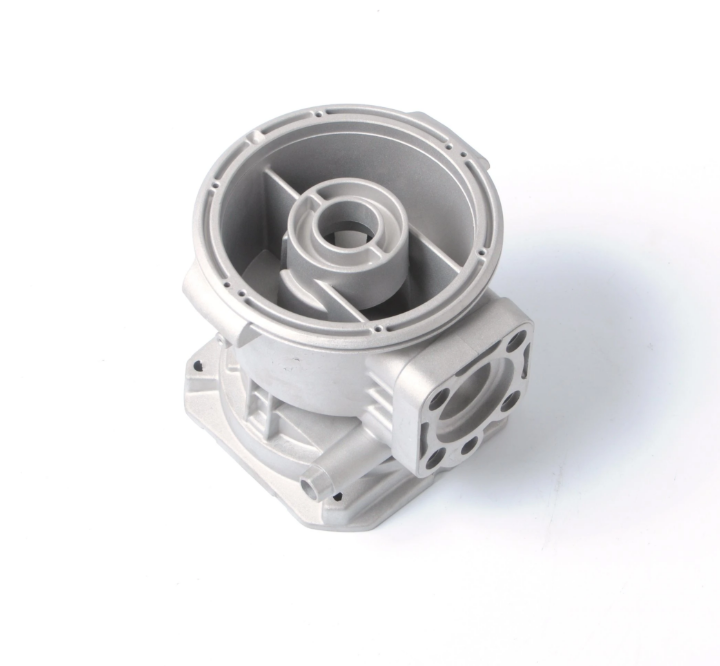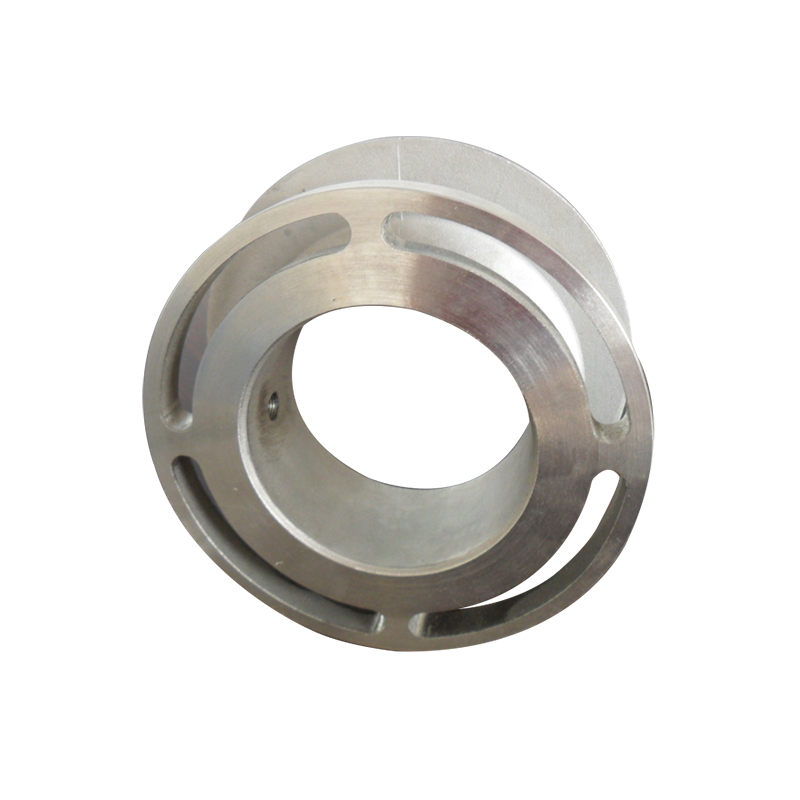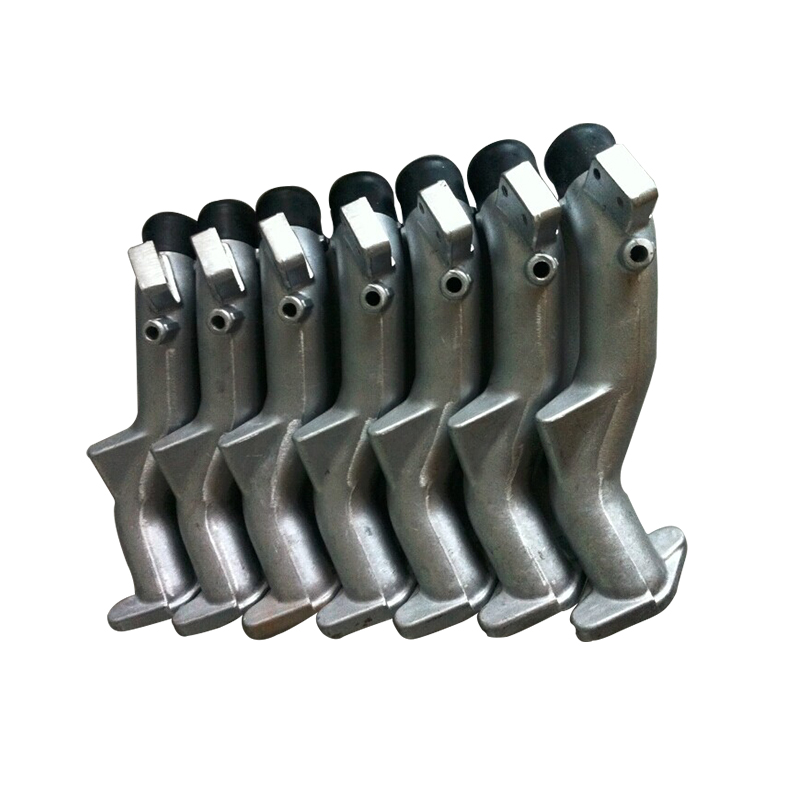Apr 28, 2023
Process of Automotive Aluminum Alloy Die Casting Parts
With the development of lightweight automobiles, aluminum automotive casting parts have received high attention and rapid development from the domestic and foreign automotive industries. Automotive casting parts refer to the load-bearing and load-bearing components in automobiles, which are closely related to automotive safety. Structural components often connect with other components to form high-strength frames that resist deformation. This type of structural component usually has characteristics such as large size, thin wall, and complex structure. Due to the need to ensure the reliable safety of the car during driving, there is also a high requirement for the mechanical performance of the car's structural components.
Here is a brief introduction to the entire production process of a large aluminum alloy structural component, providing a reference for readers.
1. Rough production
1.1 Die casting
European vehicle companies all have casting subsidiaries responsible for the research and development and production of large and complex castings. In order to reduce costs, they outsource the remaining processing processes to "post processing" enterprises for production. This production method has refined the market division of labor and improved the specialization and automation of automotive component production.
1.2 Packaging and Transportation
As the product's end user, the vehicle factory has designed a dedicated material frame based on the product's shape and the truck carriage's size. The parts are fixed in the frame using clamping mechanisms to prevent mutual contact and collision, ensuring the economy and safety of the raw material during transportation. The truck for transporting parts uses standard side curtain box trucks, which are used in conjunction with loading and unloading platforms. The dismantling of the side curtains of the carriage is extremely convenient, and both sides and rear sides can be unloaded. The body and front of the car can be separated, and the driver does not need to wait for loading and unloading time; These all improve the safety and efficiency of transportation.
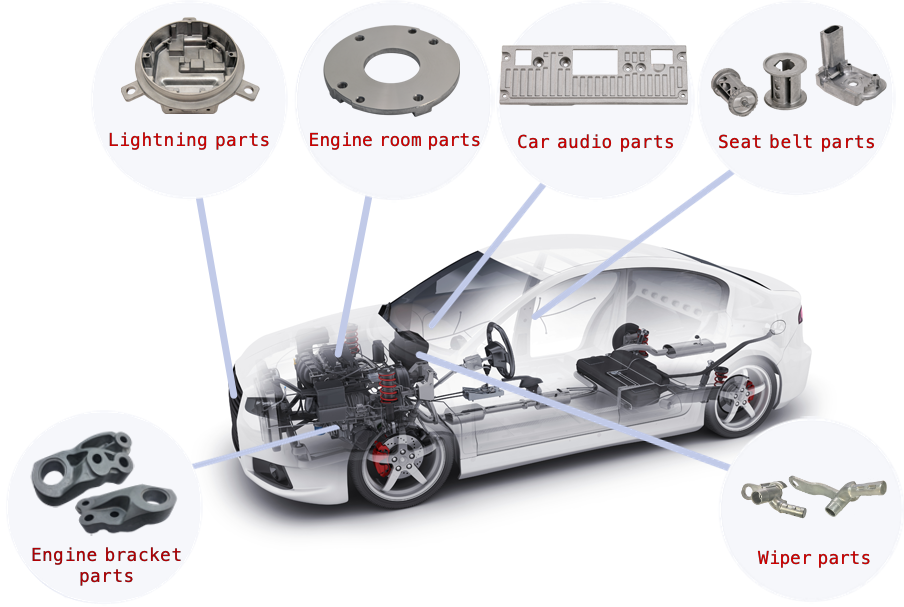
2. Post processing processing
2.1 Entry inspection
After the box truck enters the factory, a forklift is used to unload the material frame filled with blank parts to the loading point buffer area of the production line. The workers conduct visual inspections against the delivery note and personnel inspection form to check for obvious casting defects and damage and pollution during transportation.
2.2 Heat treatment T7
In order to improve the mechanical properties, corrosion resistance, dimensional stability, cutting performance, and welding performance of castings, it is necessary to carry out heat treatment on die-casting blanks. Generally speaking, ordinary die castings cannot undergo high-temperature treatment due to their high gas content. Due to the expansion and accumulation of gases in the casting during high-temperature heat treatment, the surface of the casting is bubbled and the elongation of the casting is severely reduced. Due to the use of high vacuum die casting, the gas content in the casting can be less than 15m1/100g, or even less than lOml/100g, and T7 heat treatment can be applied to the casting. T7 heat treatment can significantly improve the strength and toughness of castings simultaneously.
2.3 Bubble inspection and repair
After the solid solution treatment is completed, the parts are transported to the bubble inspection station to check for bubbles, bubble size diameter, bubble group size, bubble spacing distance, and crack size. Unqualified products are determined according to inspection standards. Small bubbles on qualified products can be gently knocked with a hammer to eliminate bubbles. After the bubble inspection and repair process is completed, scan the QR code and upload the data to the ERP system.
2.4 Correction and Testing
The deformation of the parts mainly occurs during the air-cooling quenching process, and the deformation is very small during the subsequent artificial aging process. After quenching, aluminum parts not only do not harden before crystal formation but instead become softer and more plastic than before. After air cooling quenching, they are shaped and then artificially aged to stabilize part size and reduce subsequent deformation.
2.5 Heat treatment (stabilization treatment)
After quenching, the part structure produces a supersaturated solid solution, and the metal structure is in an unstable structure. Because this product has high requirements for dimensional stability, the shape and size changes must be kept within the specified range under the condition of long-term use, so it must be stabilized. After complete artificial aging, it precipitates in the form of Mg2Si strengthening phase to obtain high toughness and high strength parts.
Perform manual aging treatment according to the temperature and time determined by the process, and after completion, manually mark the workpiece with a permanent marker and a green marking pen. Spot-check the mechanical properties of the parts after heat treatment, and use a water jet to sample at the designated position of the parts, including yield strength, tensile strength, Brinell hardness, and riveting performance. The yield strength requirement is Rp0.2 ≥ 110MPa, tensile strength Rm ≥ 170MPa, and elongation A ≥ 10%. After complete artificial aging, the strengthening term precipitates, and the strength is increased. The interval between subsequent machining and processing time cannot exceed 72 hours.
2.6 Automatic polishing
All mating surfaces, contact surfaces, and installation parts need to be smooth and free of burrs. The polishing process generates a large amount of dust and noise, and the environment is harsh. The work intensity is high, and in high production situations, mechanical hands are used for automatic polishing. The completely enclosed polishing compartment isolates dust and noise. The dust removal system ensures that the air dust in the compartment is 100% collected, and the collected dust is automatically added to water to form a paste and transported to the cleaning car.
2.7 Machining
The robotic arm grabs the workpiece from the belt conveyor and places it in the machining center. In order to match the production capacity of 90 seconds per piece, a total of 4 5-axis high-speed machining centers are equipped. The workpiece can be clamped once to complete the processing of all machining surfaces, deep holes, and tapping. A total of 38 through holes, blind holes, and threaded holes with a diameter of 5.5mm-20mm are processed. The machining center is selected for the Chiron Mill 2000 vertical 5-axis milling machine. The selection of this equipment is mainly based on the efficiency of the machine tool, the accuracy of the processed products, and the reliability of the machine tool.
2.8 Cleaning
The cleaning process is also automated, with the robotic arm placing the machined parts onto the conveyor roller support and automatically running to the cleaning room. Use a 50 ℃ cleaning solution with a pH value of 7-11 to clean the parts processed by the machine at a pressure of 3-4 bar. Then, dry them with heated compressed air, and pick them up by a robotic arm and place them at the assembly station.
2.9 Assembly
Before assembly, a manual inspection station is set up to randomly inspect the cleaned products, and detect the errors and surface cleanliness of each machined surface, deep hole, and thread.
The entire part needs to be installed with 7 internal threads, 2 (left part), or 4 (right part) blind rivets, using fully automatic installation, consisting of 3 robotic arms and an automatic feeding system. The robotic arm is equipped with automatic detection equipment. If any non-conforming products are found, they will be manually repaired.
2.10 Electrophoretic coating, packaging, and shipping
In order to improve corrosion resistance and beautify the appearance, products that have passed the inspection are cleaned, electrophoretically coated, and dried before sampling and testing the coating layer thickness, surface morphology, adhesion, corrosion resistance, and other indicators in different parts. After the final factory inspection, products with qualified quality are packaged and shipped to the vehicle factory.
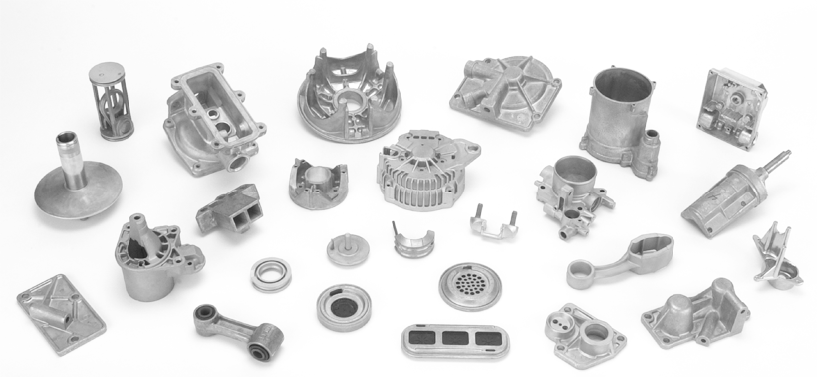
3. Summary
At present, the post-treatment of aluminum alloy die castings in China generally adopts the method of organizing production according to functional zones, and there are still very few products produced using dedicated production lines.
The premise of dedicated line production is a large output of a single product, with advantages such as high automation, low labor demand (excluding casting and coating processes, requiring only 8 operators per shift), high production efficiency (product beat of 90 seconds per piece), stable quality, and disadvantages such as high investment, poor flexibility, and high requirements for organizational production and equipment management.
Due to the high labor costs in the European automotive industry (the employer cost of ordinary operators has exceeded 45000 euros per year) and is increasing year by year, in order to reduce labor costs and ensure product quality, European casting, and post-processing enterprises are increasingly developing towards dedicated line automation and informatization. High automation enables European manufacturing enterprises to minimize their dependence on labor and survive in the fierce global market competition.
The processing process of automotive aluminum alloy die castings are diverse, which increases the difficulty of production management. In order to achieve continuous improvement in quality, production targets, and production efficiency, not only modern equipment is needed, but also excellent technical and management talents, rigorous attitudes, and scientific modern management methods are needed. I hope this article can provide some useful references and references for similar processing enterprises in China.
Ningbo Fuerd was founded in 1987 and is a leading full-service die Casting Tooling, aluminum die casting, zinc die casting, and Gravity casting manufacturer. We are a solution provider offering a wide array of capabilities and services that include engineering support, designing, molds, complex CNC machining, impregnation, tumbling, chrome, powder coating, polishing, assembly, and other finishing services. We will work with you as partners, not just suppliers.
NINGBO FUERD MECHANICAL CO., LTD
Website: https://www.fuerd.com
